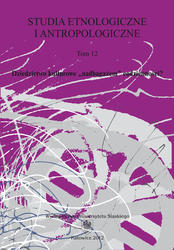

The article presents considerations on a domestic space, its functional division and ways of arrangement, the analysis of which is to illustrate both the continuation of old cultural patterns, and various types of changes proved by the attempts to transfer new social trends to homes. The author underlines that an overview of the ways of living in a given culture can reflect the dynamics of the rhythm of a particular culture. The way of organizing and functioning a house has always been influenced by such factors as the level of a technical development, economy type, values and ideals of a dominant culture, as well as a political system and social ideology. However, nowadays, a big influence on shaping a domestic space is ascribed to the culture dominated by the market laws and common consumerism, as well as a marketing policy of big market chains and commercial messages promoting their offer. An example of this commercial message which influences certain ways of arranging and using a flat interior design is in socio-cultural conditions in Poland these days, is a catalogue of IKEA shopping chains which, in these considerations, constitutes the basic material subject to analysis (the IKEA catalogues published in Poland between 2004—2011 more specifically). As the analysis conducted has it, the IKEA marketing materials treat house as one of the most appreciated values. What is more, it is a domestic space and its arrangement that is to be one of the most important elements defining an identity of an individual, but also revealing the quality of their everyday life. Thinking about a home designed in an IKEA style refers both to cultural traditions, presenting a vision of living in the contemporary world deriving from a material heritage of various world cultures, and grows from the rules of the market governing the economy of modern societies. Thus, IKEA, in its marketing practices, aims at developing a new life style meaning a particular relationship of traditions and material heritage with culture based on the market and commercial laws, but also deriving from a modern thinking about man’s identity these days.
Download files
Citation rules

Vol. 12 (2012)
Published:
 10.31261/SEIA
10.31261/SEIA